Stephen W. Hiemstra's Blog, page 46
April 9, 2024
Stone and Duke Encourage Theological Reflection
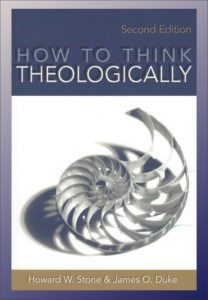
Howard W. Stone and James O. Duke. 2006. How to Think Theologically. Minneapolis: Fortress Press.
Review by Stephen W. Hiemstra, Author of Simple Faith and other books available online.
Our anti-intellectual society has trouble seeing the God’s hand at work, in part, because such vision requires thinking about things outside ourselves. Since the romantic era of the nineteenth century, Americans have preferred to “experience” God emotionally rather than to “know” God intellectually.
This is truly disturbing outcome for anyone familiar with the Great Awakening experience of eighteenth century. Post-mortems by theologians, such as Jonathan Edwards (1746), clearly showed that religious experiences not followed by theological reflection are soon forgotten. Consider the increase in church attendance immediately after 9-11. Theology helps us reflect on our experiences of God in scripture and daily life.
Introduction
Howard Stone and James Duke in their book, How to Think Theologically, respond to this question, writing:
“It is a simple fact of life for Christians; their faith makes them theologians. Deliberately or not, think—and act—out of a theological understanding of existence, and their faith calls them to become the best theologians they can be.” (1)
This is not a throw away comment; when life loses its meaning, we die even if the body continues to process air and food. If we are to continue living we need to seek meaning in the many challenging experiences that life holds for us. The question is not whether we have a theological view of life—we all do—but rather whether the theology we live by is the one that we would chose if we took the time to think about it.
Faith Seeking Understanding
Like most good theologians, Stone and Duke cite the famous line from Anselm of Canterbury (1033-1109 AD) who wrote: “I believe so that I may understand” (2008, 87) or as they cite it: “faith seeking understanding” (2). While this idea that faith precedes knowledge seems controversial until you realize that assumptions are faith statements and are required before any scientific inquiry can begin. Anselm’s apologetic laid the philosophical foundation for the modern era.
Theology Defined
Also like most good theologians, Stone and Duke define important terms. For example, they observe:
“Unfortunately, there is no universally accepted definition of the term theology. It comes to us as a compound word from ancient Greek: theo—logia are logia (sayings, accounts, teachings, theories) concerning theos (the divine, gods, and goddesses, God).” (7)
They also distinguish Christian orthodoxy “correct opinion or belief” from orthopraxy “correct practice” (7). It is often the case in some church circles that the accepted doctrine of the church is orthodox, but the church does not practice orthopraxy—a kind of hypocrisy that minimizes criticism and correction.
Embedded Theology
Stone and Duke make distinguish between embedded theology and deliberative theology. Embedded theology is defined as “Christians learn what is all about from countless daily encounters with their Christianity”. Deliberative theology is“the understanding of faith that emerges from a process of carefully reflecting upon embedded theological convictions” (13-16). Notice that neither embedded nor deliberative theology requires scholarly intervention. We engage in both types of theology on our own every day as we deepen our understanding of our own faith journey. But, as Stone and Duke observe, “theological reflection cannot flourish unless it is valued and practices by the church itself” (23).
Organization
Stone and Duke write in 9 chapters proceeded by 2 prefaces and an introduction and followed by a glossary, notes, and index. The 9 chapters are:
Faith, Understanding, and Reflection,
Fashioning Theology,
Resources for Theological Reflection,
Theological Method,
The Gospel,
The Human Condition,
Vocation,
Theological Reflection in Christian Community,
Forming Spirit.
At the time of publication, Howard W. Stone was a professor emeritus of Department of Psychology and Pastoral Counseling at Brite Divinity School at Texas Christian University and the author of numerous books. James O Duke was also a professor of history of Christianity and historical theology at Brite.
Assessment
Stone and Duke’s How to Think Theologically primes young seminarians for seminary. Assess to its wisdom goes much further and any dedicated reader will benefit from it. If nothing else, consider the irony posed by the cover!
References
Anselm of Canterbury. 2008. The Major Works. New York: Oxford University Press.
Edwards, Jonathan. 2009. The Religious Affections (Orig pub. 1746). Vancouver: Eremitical Press.
My best friend in high school, who is now a Lutheran pastor, used to moan that our faith forced us to become “little Kierkegaards” because our faith raises more questions than answers. Soren Kierkegard (1813-1855) was a well-known, nineteenth century theologian.
Stone and Duke Encourage Theological Reflection
Also see:
The Face of God in the Parables
The Who Question
Preface to a Life in Tension
Other ways to engage online:
Author site: http://www.StephenWHiemstra.net
Publisher site: http://www.T2Pneuma.com
Newsletter at: https://bit.ly/Lent_Mar_2024 , Signup
The post Stone and Duke Encourage Theological Reflection appeared first on T2Pneuma.net.
April 8, 2024
Christ Figures: Monday Monologues (podcast), April 8, 2024

By Stephen W. Hiemstra
This morning I will share a prayer and reflect on Christ Figures. After listening, please click here to take a brief listener survey (10 questions).
To listen, click on this link.
Hear the words; Walk the steps; Experience the joy!
Christ Figures: Monday Monologues (podcast), April 8, 2024
Also see:
The Face of God in the Parables
The Who Question
Preface to a Life in Tension
Other ways to engage online:
Author site: http://www.StephenWHiemstra.net
Publisher site: http://www.T2Pneuma.com
Newsletter at: https://bit.ly/Lent_Mar_2024 , Signup
The post Christ Figures: Monday Monologues (podcast), April 8, 2024 appeared first on T2Pneuma.net.
April 7, 2024
Prayer for Christlike Leadership
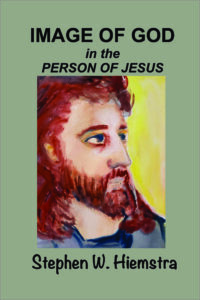
By Stephen W. Hiemstra
Almighty Father,
All praise and honor, power and dominion, truth and justice are yours, because you have given us Christ figures to aid in overcoming our own weaknesses and fear. Help us to do better.
Forgive our unwillingness to pay attention to your scriptures and the leanings of the Holy Spirit. Help us to do better.
Thank you for the examples of Moses, Joseph, and Gideon. Help us to learn from their examples.
In the power of your Holy Spirit, grant us the willingness and ability to deal with our weaknesses and confront our fears that we might become leaders in your church.
In Jesus’ precious name, Amen.
Prayer for Christlike Leadership
Also see:
The Face of God in the Parables
The Who Question
Preface to a Life in Tension
Other ways to engage online:
Author site: http://www.StephenWHiemstra.net
Publisher site: http://www.T2Pneuma.com
Newsletter at: https://bit.ly/Lent_Mar_2024 , Signup
The post Prayer for Christlike Leadership appeared first on T2Pneuma.net.
April 5, 2024
Christ Figures

I will put enmity between you and the woman,
and between your offspring and her offspring;
he shall bruise your head, and you shall bruise his heel.
(Gen 3:15)
The term, Christ figure, is an informal reference to deliverer, redeemer, or messiah that is more of a literary designation—even in popular literature (e.g. Schaefer 2013). The most obvious challenge arises in external struggle:
“And when all these things come upon you, the blessing and the curse, which I have set before you, and you call them to mind among all the nations where the LORD your God has driven you, and return to the LORD your God, you and your children, and obey his voice in all that I command you today, with all your heart and with all your soul, then the LORD your God will restore your fortunes and have mercy on you, and he will gather you again from all the peoples where the LORD your God has scattered you.” (Deut 30:1-3)
Walter Brueggemann (2016, 59) describes this passage as the Deuteronomic Cycle, which he paraphrases as: collective sin, scattering, enslavement, crying out to the Lord, and the sending of a deliverer. For Jesus suffering is most apparent late in life beginning in the garden of Gethsemani, while for Christ figures in the Old Testament the internal challenge arises much earlier.
Joseph as a Christ Figure
This deliverance is often embodied in charismatic leadership. The first hint of this deliverer in Genesis 3, cited above, shows up in spiritual warfare—a clash of the divine and the demonic.
In the Joseph story, this spiritual conflict is primarily internal. Born to Jacob’s favorite wife, Rachel, Joseph is sold into slavery in Egypt by his jealous brothers (Gen 30:24, 37:28). Joseph is talented, faithful, and gifted by God with the ability to interpret dreams, but he must learn to channel his gifts with sensitivity. Joseph must also overcome his own self-pity and hatred of his brothers before he can deliver his family from drought and starvation.
Joseph overcomes his internal struggle and become a deliverer of his people once he learns to forgive his brothers: “As for you, you meant evil against me, but God meant it for good, to bring it about that many people should be kept alive, as they are today.” (Gen 50:20) As a Christ figure, Joseph is interesting because we normally interpret spiritual warfare as an external struggle, not an internal one.
Moses as a Christ Figure
The archetype of this external struggle shows up in Moses’ confrontation with Pharaoh:
“So Moses and Aaron went to Pharaoh and did just as the LORD commanded. Aaron cast down his staff before Pharaoh and his servants, and it became a serpent. Then Pharaoh summoned the wise men and the sorcerers, and they, the magicians of Egypt, also did the same by their secret arts. For each man cast down his staff, and they became serpents. But Aaron’s staff swallowed up their staffs.” (Exod 7:9-12)
God himself mediates this confrontation between Moses and Pharaoh, instructing Moses as to what he should do, which models our dependence on the Holy Spirit in such power encounters. Still, Moses might be described as an Old Testament Christ figure because with God’s mediation he delivers the Nation of Israel from the hand of Pharaoh, symbolized in this passage by Aaron’s staff swallowing the staves of the Egyptian sorcerers and magicians.
We often gloss over Moses’ backstory and internal struggle but Moses could not return to Egypt until he overcame his fear. Moses had murdered an Egyptian and was exiled for forty years in the deserts of Midian. Thus, the deliverance of Israel from the Egyptians started with Moses’ struggle to deal with his fear of being prosecuted for murdering an Egyptian (Exod 2:11-15).
Gideon as Christ Figure
The Book of Judges repeats the Deuteronomic cycle over and over introducing us to many examples of charismatic leadership.
One popular example of charismatic leadership is Gideon, whose story begins: “The people of Israel did what was evil in the sight of the LORD, and the LORD gave them into the hand of Midian seven years.” (Jdg 6:1) The people of Israel call out to God (Jdg 6:6) And God sends an angel to Gideon to call him into leadership. With only three hundred men, Gideon then defeats the army of the Midianites almost miraculously (Jdg 7:25).
Again, while we often remember Gideon’s victory over the Midianites, his own struggle with fear initially holds him back. Listen to Gideon’s prayer:
“And he said to him, Please, Lord, how can I save Israel? Behold, my clan is the weakest in Manasseh, and I am the least in my father’s house. And the LORD said to him, But I will be with you, and you shall strike the Midianites as one man.” (Jdg 6:15-16)
Gideon’s faith is also weak. Consider one of several tests that God gives him:
“That night the LORD said to him, Take your father’s bull, and the second bull seven years old, and pull down the altar of Baal that your father has, and cut down the Asherah that is beside it and build an altar to the LORD your God on the top of the stronghold here, with stones laid in due order. Then take the second bull and offer it as a burnt offering with the wood of the Asherah that you shall cut down. So Gideon took ten men of his servants and did as the LORD had told him. But because he was too afraid of his family and the men of the town to do it by day, he did it by night.” (Jdg. 6:25-27)
Through a series of such tests, Gideon’s faith grows and with it comes support from the wider community of Israel.
These Christ figures in the Old Testament, of course, anticipate the coming of Christ in the New Testament. They also show how internal faith challenges must be overcome in growing into leadership, which we might as Christians recognize as the role of the Holy Spirit in our own lives.
References
Brueggemann, Walter. 2016. Money and Possessions. Interpretation series. Louisville: Westminster John Knox Press.
Schaefer, Jack. 2013. Shane (Orig Pub 1948). New York: Houghton Mifflin Harcourt.
Christ Figures
Also see:
The Face of God in the Parables
The Who Question
Preface to a Life in Tension
Other ways to engage online:
Author site: http://www.StephenWHiemstra.net
Publisher site: http://www.T2Pneuma.com
Newsletter at: https://bit.ly/Lent_Mar_2024 , Signup
The post Christ Figures appeared first on T2Pneuma.net.
April 2, 2024
Williams Helps Technical Writers Revise
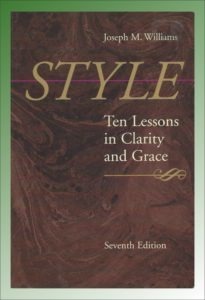
Joseph M. Williams. 2003. Style: Ten Lessons in Clarity and Grace. New York: Longman.
Review by Stephen W. Hiemstra
In our shrinking world, misunderstandings are common. Misunderstanding can arise from being unlearned, uncultured, or untimely; it can arise due to presumptions about gender, race, or class; it can arise because of lack of sleep, lack of tact, or lack of a sufficient coffee. But there is no excuse for being misunderstood because of a poorly chosen word! After all, the world is full of so many good stylebooks to choose from. (Or, is it—from which to choose?)
Introduction
Joseph William’s book, Style: Ten Lessons in Clarity and Grace, stands out for his interest in complex sentences and he generally aims at answering three questions:
What is it in a sentence that makes readers judge writing as they do?
How can we diagnose our own prose to anticipate their judgments?
How can we revise a sentence so that readers will think better of it? (ix)
Good Writing is Understood
Notice William’s focus on the reader. Iimplicitly, he says that the mark of good writing is that it can be understood. He then goes on to focus not on writing, but on revision where it is helpful to understand three distinctions:
Among a few grammatical terms, like subject, verb, noun, active, passive, clause, preposition, and coordination…
Between topic and stress…
Among five unfamiliar terms: nominalization, metadiscourse, resumptive modifier, summative modifier, and free modifier (x).
Admittedly, I got point one, but points two and three escaped me until I had read his book. William’s advises us to read this book slowly (x) and understand his interest in managing the content of complex sentences.
Complex Sentences Pose Special Problem
Complex sentences are particular problem in technical writing where the logical flow, balance, and structure can be daunting. This daunting nature arises because a complex sentence consists of an independent clause (a simple sentence) and one or more subordinate clauses (224), and highly technical subjects require a lot of complex sentences. How do the roles of the different parts of the sentence relate to one another and how do multiple complex sentences hang together in mirroring the complexity of technical subjects without adding additional linguistic complexity? A paragraph composed of such complex sentences is common in technical writing. The rules for managing this complexity are not necessarily obvious or often discussed by most stylebook authors.
Williams starts by discussing clear, simple sentence construction and gradually adding additional complexity.
What does the reader expect, Williams asks?
The answer is that in a fairy tale, the subject is a character and the action is a verb (34-39). The opposite of this clear structure is excessive use of nominalizations—verbs and adjectives masquerading as nouns (38)—which often move writing away from clear and active sentences. As you add complexity to the simple sentence, maintain clarity by keeping subject and verb (and object) close together. Following this prescription, Williams argues that your sentences will be more concrete, concise, coherent, and clearer (46-47).
Metadiscourse
As Williams dives deeper into complexity, he defines a term that he refers to as metadiscourse, which refers to at least four things:
The writer’s thinking and direction.
The writer’s degree of certainty.
Directions to the reader.
Logical connections in the writing itself (66).
Other authors might call this the author’s voice or narrator.
Cohesion and Coherence
While metadiscourse offers structure to a passage, the sentences themselves hang together (or not) depending on their own organization. Williams distinguishes two ways this can happen: cohesion and coherence. Cohesion refers to “how each sentence ends and the next one begins” (78) while coherence refers to how well “all the sentences in a passage cumulatively begin” (79). Williams sees cohesion advanced by beginning a sentence with familiar points and words and ending with new or lengthy material (81). Coherence has more to do with “a sense of the whole” (83). Other authors may employ different words for these same two concepts.
Williams’ concept of cohesion naturally leads into a discussion of a complex sentence topic and stress. Topic has to do with the subject of the sentence, usually the front of the sentence. Articulate stress (or emphasis) at the end of a sentence (99). The topic is familiar and links to the previous sentence while the stress is often new material. Being sensitive to these concepts not only enhances cohesion, but it also helps the author organize sentences around key points.
Sentence Priorities
Williams’ advice starts to bear fruit at this point. Less important material should never be placed at the beginning or the end of a sentence where it would receive greater scrutiny. This insight allows Williams to then offer a wide range of strategies for shifting more important material into parts of the sentence where appropriate emphasis (front or back) can be obtained. For example, a passive verb allows you to flip the subject and object which may be helpful in maintaining continuity with the previous or following sentence. Likewise, a “there” construction can used to shift an idea to the end of the sentence where it would receive more stress (100-102). This is highly actionable advice in editing a confusing paragraph.
Assessment
Joseph Williams’ Style: Ten Lessons in Clarity and Grace targets experienced, technical nonfiction students and writers looking for a good stylebook. He writes in an accessible style and offers many examples of complex paragraphs written more concisely.
Footnotes
Or maybe not! Sometimes I think that when Jean- Paul Sartre wrote his play, No Exit, he must have had in mind a writer caught in perpetuity between two editors, one a retired English teacher and the other a fastidious journalist, unable to agree on the rules for writing clear English prose. Jean-Paul Sartre. No Exit and Three Other Plays. (New York: Alfred A Knopf; Vintage Books, 1955).
The old rule—“do not end a sentence with a preposition”—is now considered overly formal (21).
http://news.uchicago.edu/article/2008...
Williams Helps Technical Writers Revise
Also see:
Hilt Explains Tropes
Books, Films, and Ministry
Other ways to engage online:
Author site: http://www.StephenWHiemstra.net
Publisher site: http://www.T2Pneuma.com
Newsletter at: https://bit.ly/Lent_Mar_2024 , Signup
The post Williams Helps Technical Writers Revise appeared first on T2Pneuma.net.
April 1, 2024
Isaac: Monday Monologues (podcast), April 1, 2024

By Stephen W. Hiemstra
This morning I will share a prayer and reflect on the Story of Isaac. After listening, please click here to take a brief listener survey (10 questions).
To listen, click on this link.
Hear the words; Walk the steps; Experience the joy!
Isaac: Monday Monologues (podcast), April 1, 2024
Also see:
The Face of God in the Parables
The Who Question
Preface to a Life in Tension
Other ways to engage online:
Author site: http://www.StephenWHiemstra.net
Publisher site: http://www.T2Pneuma.com
Newsletter at: https://bit.ly/Lent_Mar_2024 , Signup
The post Isaac: Monday Monologues (podcast), April 1, 2024 appeared first on T2Pneuma.net.
March 31, 2024
Mark 16: Easter
 “And he said to them, Do not be alarmed. You seek Jesus of Nazareth, who was crucified.
“And he said to them, Do not be alarmed. You seek Jesus of Nazareth, who was crucified.
He has risen; he is not here. See the place where they laid him” (Mark 16:6 ESV).
By Stephen W. Hiemstra
One of the most vivid memories I have as a young person was the experience of an Easter sunrise. Easter is mysterious, earth-shattering news. How could I sleep through it?
Funeral
At my grandfather’s funeral, I was given a head of wheat which hangs now in my kitchen. The wheat reminds me of Jesus’ saying: “Truly, truly, I say to you, unless a grain of wheat falls into the earth and dies, it remains alone; but if it dies, it bears much fruit” (John 12:24 ESV).
Resurrection Reminders
The mystery of resurrection is everywhere in nature. Sunrise is the resurrection of the day. Springtime is the resurrection of the seasons. The metamorphosis from caterpillar to cocoon to adult butterfly is a beautiful, dramatic resurrection. The Apostle Paul writes: “all of creation groans in anticipation of our redemption” (Romans 8:19-23).
Messianic Prophecies
Prophesies of Jesus’ resurrection start early in scripture. Systematic theologians see salvation history as creation, fall, and redemption. Because sin is the cause of death, eternal life requires forgiveness of sin which is brought about in Christ’s resurrection. This transition is prophesied in Genesis: “I will put enmity between you and the woman, and between your offspring and her offspring; he shall bruise your head, and you shall bruise his heel” (Gen 3:15 ESV).
Other theologians see resurrection arising out of righteous suffering. The prophet Job writes not only of Christ, but his own resurrection: “For I know that my Redeemer lives, and at the last he will stand upon the earth. And after my skin has been thus destroyed, yet in my flesh I shall see God, whom I shall see for myself, and my eyes shall behold, and not another” (Job 19:25-27 ESV). At the birth of the church on Pentecost (Acts 2:27), the Apostle Peter sees resurrection prophesied by King David: “For you will not abandon my soul to Sheol, or let your holy one see corruption” (Psalm 16:10).
When asked to produce a sign Jesus himself spoke of the sign of Jonah (Luke 11:29-32). In the belly of the whale Jonah prayed: “I called out to the LORD, out of my distress, and he answered me; out of the belly of Sheol I cried, and you heard my voice” (Jonah 2:2 ESV). And the whale spit him out on dry land, another resurrection story.
Old Testament Resurrections Accounts
Resurrection did not start with Jesus. Some see the story of the binding of Isaac as a resurrection account and a prophecy of the cross (Genesis 22:1-18). The prophet Elisha raises the Shunammite’s son from the dead (2 Kings 4:32-37). In the valley of bones, Ezekiel prophesied about resurrection of the Nation of Israel (Ezekiel 37:3-6). The exodus of the nation of Israel from Egypt and the return of the exiles from Babylon are both resurrection accounts where a dead nation rises to new life.
New Testament Resurrection Accounts
In the gospels, Jesus himself performed several resurrections. He raised Jairus’s daughter from the dead (Mark 5:22-43). He raised the widow’s son (Luke 7:12-17). Most remarkably, after lying four days in the tomb he raised Lazarus from death (John 11:1-45). Like other resurrections, Jesus’ healings and exorcisms brought hope where there was none.
Some scholars believe that John Mark’s gospel recorded Apostle Peter’s testimony while he was in Rome during AD 41-54. Mark later traveled with Paul. Mark’s role was to teach about the life of Jesus. Later, Luke may have assumed this role in Paul’s missionary team.
Mark’s Unusual Ending
Interestingly, Mark did no see the gospel ending with Jesus. Neither did Luke whose gospel was followed by the Book of Acts. Mark’s gospel starts with: “The beginning of the gospel of Jesus Christ, the Son of God” (Mark 1:1 ESV). Scholars believe that Mark’s gospel ends with the woman going out from the tomb to relay the angel’s message: “But go, tell his disciples and Peter that he is going before you to Galilee” (Mark 16:7 ESV). Likewise, our part in salvation history is to pass on the story. As the hymnist Katherine Hankey (1834-1911) writes: “I love to tell the story, of unseen things above, of Jesus and his glory, of Jesus and his love…” [2]
Christian Hope
Christian hope starts with the resurrection: we know that death is not the end of life’s story. And because we know the rest of the story, we can invest in life and live each day with boldness and joy
Footnotes
Did Abraham believe God would raise Isaac from the dead? Why did the angel have to tell Abraham twice?
[2] www.hymnsite.com/lyrics/umh156.sht
Mark 16: Easter
Also see:
The Face of God in the Parables
The Who Question
Preface to a Life in Tension
Other ways to engage online:
Author site: http://www.StephenWHiemstra.net
Publisher site: http://www.T2Pneuma.com
Newsletter at: https://bit.ly/Lent_Mar_2024 , Signup
The post Mark 16: Easter appeared first on T2Pneuma.net.
Moriah Prayer

By Stephen W. Hiemstra
Almighty Father,
All praise and honor, power and dominion, truth and justice are yours, because you did not withhold your son, but offered him as a sacrifice on the cross that we might be forgiven.
We confess that we are not worthy to be called your sons and daughters, but can only approach you as your children because of the blood of Jesus.
Thank you for your mercy. Let us never forget.
In the power of your Holy Spirit, draw us to yourself. Open our heart, illumine our thoughts, strengthen our hands in your service.
In Jesus’ precious name, Amen.
Moriah Prayer
Also see:
The Face of God in the Parables
The Who Question
Preface to a Life in Tension
Other ways to engage online:
Author site: http://www.StephenWHiemstra.net
Publisher site: http://www.T2Pneuma.com
Newsletter at: https://bit.ly/Lent_Mar_2024 , Signup
The post Moriah Prayer appeared first on T2Pneuma.net.
March 30, 2024
Mark 15: Holy Saturday
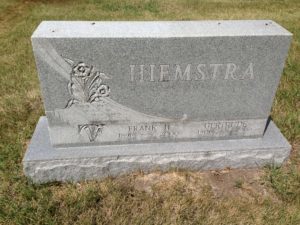 “And Joseph bought a linen shroud, and taking him down, wrapped him in the linen shroud
and laid him in a tomb that had been cut out of the rock.
“And Joseph bought a linen shroud, and taking him down, wrapped him in the linen shroud
and laid him in a tomb that had been cut out of the rock.
And he rolled a stone against the entrance of the tomb.” (Mark 15:46 ESV)
By Stephen W. Hiemstra
Jesus is buried on the Day of Preparation which ends at sundown when the Jewish Sabbath begins. This detail in Mark’s Gospel is important because burial was forbidden on the Sabbath and executed criminals could not hang overnight (Deut 21:23). The Gospels mention nothing taking place on the Sabbath while Jesus lay in the tomb and the narrative resumes on the following day. In other words, Jesus rested in the tomb over the Sabbath. Holy Saturday was a day of mourning and grief.
A Grieving HolidayGrief is more than crying. In Jesus’ Beatitudes, Matthew records: “Honored are those who mourn, for they shall be comforted.” (Matt 5:4) Luke records: “Honored are you who weep now, for you shall laugh.” (Luke 6:21) Both accounts of this Beatitude are written in the form of a lament which has two parts. In the first part, one empties the heart of all grief and pain and anxiety in prayer to God; in the second part, having been emptied the heart turns to God in praise. In the lament, when we grieve, we make room in our hearts for God.
The Theology of LamentThe most famous lament in the Bible is cited by the Gospel of Mark as Jesus’ last words: “My god, my god, why have you forsaken me?” (Mark 15:34) These words come from Psalm 22 verse one which turns to God in verse 19: “But You, O LORD, be not far off; O You my help, hasten to my assistance.” At a time when much of scripture was memorized, rabbis would cite the first part of a passage knowing that the audience would fill in the missing part. Knowing this tradition, Jesus could cite the first verse in Psalm 22 knowing that people hearing him would know the Psalm and how it ended.
Jesus gave us a template for dealing with grief the night before during his prayer in Gethsemane. Mark records that Jesus’ prayed three times: “Abba! Father! All things are possible for You; remove this cup from Me; yet not what I will, but what You will.” (Mark 14:36). Jesus is aware that he stands before the cross and does not want to die; still, he yields to God’s will. Each time we face pain and grief we are faced with a decision: do we turn to God or do we turn into our grief? Our identity is crafted from a lifetime of such decisions.
Joseph of ArimatheaThe story of Joseph of Arimathea is instructive. Mark records: “Joseph of Arimathea, a respected member of the council, who was also himself looking for the kingdom of God, took courage and went to Pilate and asked for the body of Jesus.” (Mark 15:43) Asking for the body of a man just crucified for sedition took guts. Yet, with no expectation of resurrection, on a day when Jesus’ inner circle was in hiding and in fear, Joseph “took courage” and asked Pilate for the body of Jesus. Then, he buried him in his own grave [4].
Holy Saturday Reveals our TheologyHoly Saturday is a time to reflect on Christ’s crucifixion. Are we among those happy to see Jesus in the tomb or are we looking forward to the kingdom of God like Joseph of Arimathea? This Gethsemane moment is one of many in this life. The answer to the implied question—Do we turn to God in our pain or sulk?—ultimately defines who we are because life includes many such Gethsemane moments and we have a special relationship with pain.
FootnotesBurial is work, hence forbidden on the Sabbath (e.g. Deut 5:12-15).
Also: Matthew 27:46. The direct citation of an Aramaic expression—“Eli, eli, lama sabachthani?” in both the Mark and Matthew accounts makes it more likely that these are the actual words of Jesus. This is because the most important expressions in the Bible are cited directly rather than translated or, in this case, the actual words are both cited and translated.
Jesus does exactly that in Matthew 21:16 citing Psalm 8:2.
[4] What a picture of substitutionary atonement—Jesus was buried in my grave so that I do not have to be.
Mark 15: Holy SaturdayAlso see:A Roadmap of Simple FaithChristian Spirituality Looking Back A Place for Authoritative PrayerOther ways to engage online:Author site: http://www.StephenWHiemstra.net, Publisher site: http://www.T2Pneuma.com. Newsletter: http://bit.ly/HailMary21The post Mark 15: Holy Saturday appeared first on T2Pneuma.net.
March 29, 2024
Mark 15: Good Friday
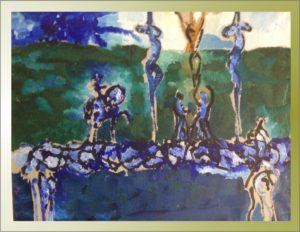
“And when the centurion, who stood facing him, saw that in this way he breathed his last, he said,
Truly this man was the Son of God!” (Mark 15:39 ESV)
By Stephen W. Hiemstra
Second Trial
Pontius Pilate gets right to the point: “Are you the King of the Jews?” Jesus answers with two words–σὺ λέγεις—which means: you say (Mark 15:2). The chief priests accuse him of many things. Pilate asks Jesus a second question: “Have you no answer to make?” (Mark 15:4) Jesus does not respond (Isaiah 53:7). Pilate is amazed.
First Trial
The night before, the high priest asked Jesus if he is the Messiah (Christ). Jesus responded using the words God from Exodus 3:14 saying: “I am”. Then, in case anyone misunderstood him, he paraphrased the messianic prophecy in Daniel 7:13: “you will see the Son of Man seated at the right hand of Power, and coming with the clouds of heaven” (Mark 14:62 ESV). The high priest accordingly accused Jesus of blasphemy which is punishable by stoning under Jewish law (Leviticus 24:16). But since Rome reserved the right to decide all cases of capital punishment, the chief priests accused Jesus of the political crime of sedition—treason against Rome. This is why Pilate asked Jesus: “Are you the King of the Jews?” (Mark 15:2)
What Kind of Messiah?
Realizing that Jesus is innocent of the charge of sedition, like a good politician Pilate begins working the crowd. In offering to release a prisoner named Barabbas, who was guilty of both sedition and murder (Mark 15:7), Pilate is effectively asking the crowd what kind of Messiah they prefer. The crowd asked for Barabbas who was known to be a Jewish nationalist—in other words, the crowd prefers a kingly Messiah.
Messiah means anointed one in Hebrew which translates as Christ in Greek. Three types of roles are anointed: prophets, priests, and kings. In his earthly ministry, Jesus embodied the first two roles (prophet and priest), but the crowd wanted a king—someone to drive the Romans out—as we saw earlier in Mark 11:10.
So Pilate gave them what they wanted (Romans 1:24-25), washed his hands of the decision, and sent Jesus to the cross.
Mark 15: Good Friday
Also see:
The Face of God in the Parables
The Who Question
Preface to a Life in Tension
Other ways to engage online:
Author site: http://www.StephenWHiemstra.net
Publisher site: http://www.T2Pneuma.com
Newsletter at: https://bit.ly/Lent_Mar_2024 , Signup
The post Mark 15: Good Friday appeared first on T2Pneuma.net.



